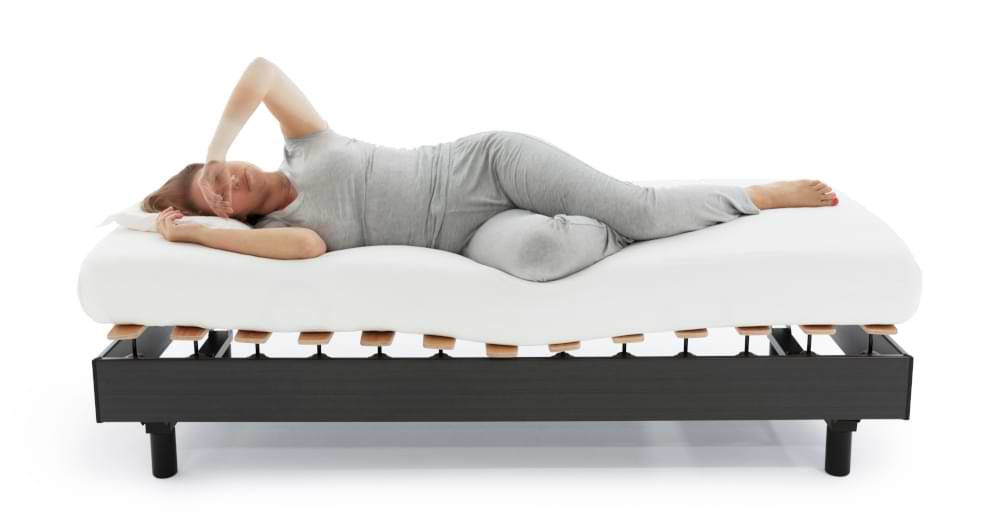The best sleeping position for lower back pain
The right sleeping position is essential for a good night’s sleep. A poor sleeping position can itself be the cause of lower back pain and many other complaints. Needless to say, the wrong sleeping position will make things even worse for anyone with lower back pain. But what is the best sleeping position for lower back pain? Read this article to learn more.
The back position is the best sleeping position for lower back pain
The back position is recommended for people with lower back pain who are also sensitive to pressure points. That’s why the back position is the best solution for them. Support for the muscles and surrounding tissue is the greatest in that sleeping position. In other words, the pressure is distributed over the largest possible area, resulting in fewer painful pressure points. A good sleeping position allows your spinal column and back muscles to recover maximally at night. With a better rested back, there’s a good chance that you will also feel less back pain during the day. The belly position is a very stressful position for lower back pain. We previously told you how you can learn to stop sleeping on your belly.
Ergonomic support is essential for lower back pain
If your back remains in its natural position at night and is optimally supported, the muscles will relax and the nerves of the spinal column will send fewer pain signals. To achieve the best lying position with lower back pain, the natural curvature of the spine (S-shaped) must be supported in the back position and the spine must be nice and straight in the side position. Otherwise the lower back muscles will be stressed and the lower back pain will get even worse.

The ACTIVE+ sleep system with a suitable mattress provides this support. The ACTIVE+ sleep system offers active support and automatically moves with you when you change your sleeping position. The system consists of a hydraulic slatted base with small pumps that distribute the pressure, and a mattress that flexibly conforms to the shape of the base. This way your back gets the best support in all positions.
What happens if you sleep on your side with lower back pain?
Of course, it’s easy to say “Always sleep on your back.” In practice, nobody stays still the whole night. People who are used to sleeping on their side for many years, in particular, will automatically assume a side position again. This increases the pressure on the protruding parts of the body, such as the hips and shoulders. A bed base that adapts to the sleeping position, such as the Dorsoo ACTIVE+ sleep system, can considerably reduce the pressure.
The importance of a suitable pillow
Which sleeping position should you assume with lower back pain? The back position is probably the best solution in that situation, but don’t lose sight of the importance of the pillow. An ergonomic pillow with the right height is essential, so that your neck is supported in line with its natural curvature. With the back position, the ideal pillow is significantly lower than for people who sleep on their side. If the pillow is too high, it puts pressure on the neck vertebrae, and in time this can lead to pain or a stiff neck. The pain can even spread to your back. You should look for a suitable pillow that you can try out as you wish and can raise or lower yourself.


